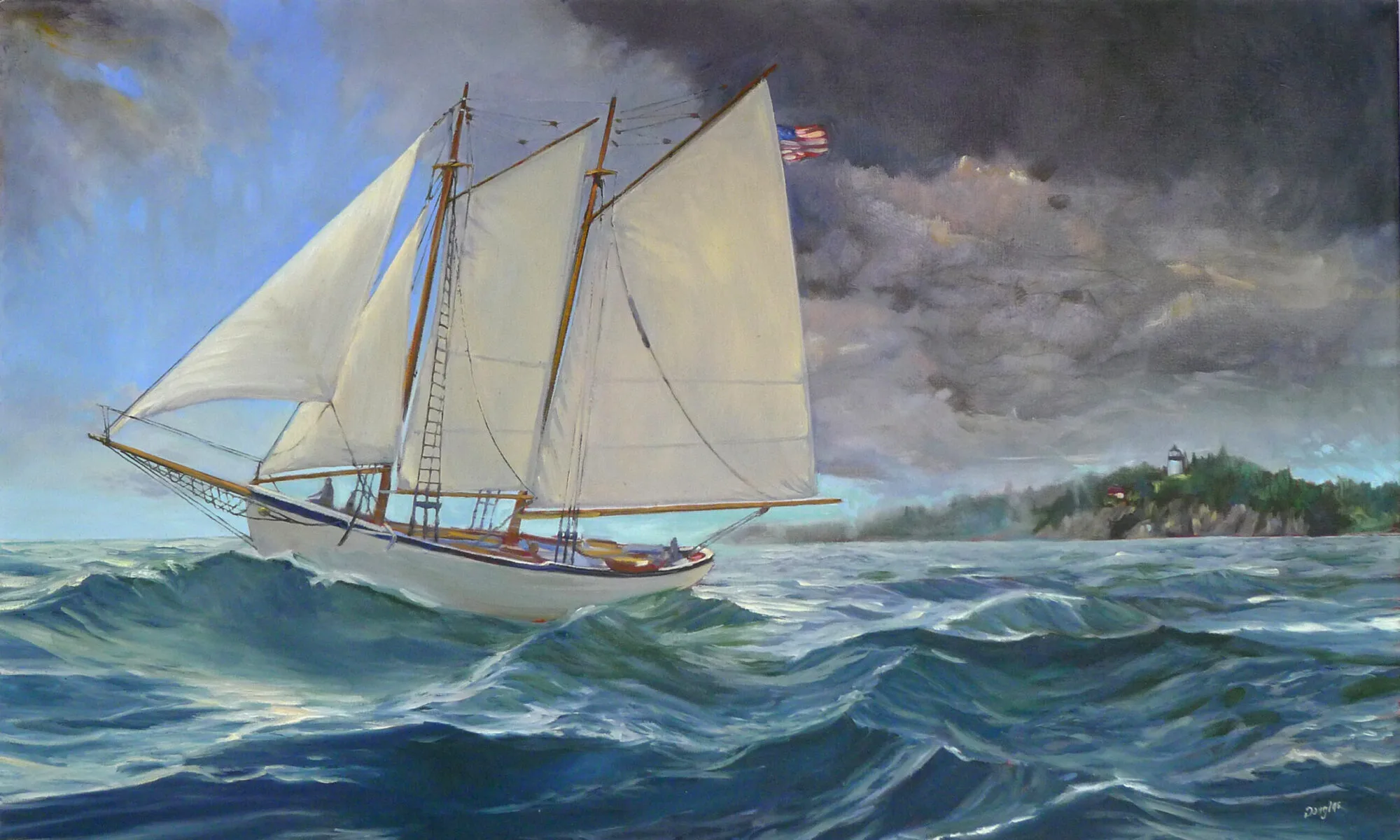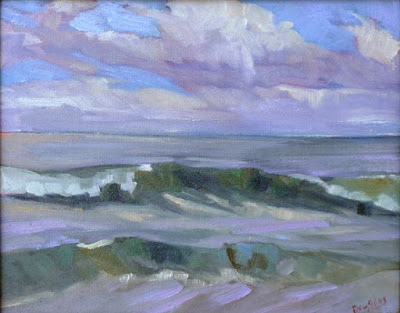Original art comes in all price points. It’s not just for rich people.
|
Apple Orchard by Chrissy Spoor Pahucki is available at pleinair.store.
|
Almost everyone in America knows that a painting reputed to be by Leonardo Da Vinci sold for a record-breaking $450 million last week at Christie’s. That’s an amount I can’t even begin to comprehend. It implies that regular folks like you and me can’t afford art.
“When I was a child middle-class people didn’t have original art in their homes, unless one of the family was an artist,” said painter Bobbi Heath. “Things are different now. Original artwork is available at a price point equivalent to buying a poster and having it framed. You can find it online, at art fairs and open studios, especially this time of year. And you don’t need a gallery owner to tell you what you should like. Spread your wings and hang something on the wall that makes you happy.”
|
This little dinghy by Bobbi Heath is available at Yarmouth Frame and Gallery.
|
When I was a kid, our public library had an art-lending program. You could borrow a painting or print, hang it on your wall for a while and enjoy it, then return it and borrow another work. That was as profound as checking out books.
Art is a tool by which we can dream. It has the capacity to transport us out of our current situation. The hospital where my friend lay dying had beautiful floral paintings in its cancer wing. When I had to step out of her room while they did a procedure—which was often—I found myself staring into those paintings. They were my path out of a sad situation.
Our choice of paintings is one of the primary ways we express ourselves in our personal spaces. Bob Bahr used to write a column for Outdoor Painter called Artist as Collector. It told you as much about the artist’s personality as the artist’s own work did.
 |
|
This little mussel by Susan Lewis Baines is available through the Kelpie Gallery.
|
“One thing I have learned after 20 years working with art is that the ‘price’ of a work of art has nothing to do with its value,” said conservator Lauren R. Lewis. “The value lies in how you connect with a work of art on an emotional level. I have never been able to get on board with the idea of ‘art as investment.’ The art market is fickle, so I never recommend that someone buy a painting with the intention of selling it later at a profit.”
I have clients, a married couple, who pared their lives down to almost no material possessions. They own two large oil paintings—one by Marilyn Fairman and one by me. As nomadic as their life is, they hang those paintings in a prominent place wherever they land. Art brings a language of beauty to our lives,” one of them told me. “We have contentment and constancy from looking at our beloved pieces.”
 |
|
White Pines and Black Spruce by Carol L. Douglas is available at pleinair.store
|
“Unlike generic prints from the nearest big box store, original art comes with a story about where you found it, why you bought it, or the super cool artist you bought it from,” said painter Chrissy Pahucki.
Original art is less expensive than you might imagine. I was at a gallery last weekend where there were hand-drawn colored pencil works for less than I was considering paying for a mixer attachment for my daughter for Christmas. Less, in fact, than a coffee-table art book, but with more staying power.
“Buy art because you love it,” said Lauren Lewis. “Buy art because it makes you feel good to look at it. Buy art because you need to have it in your life. That is how you tell the worth of a painting.”

